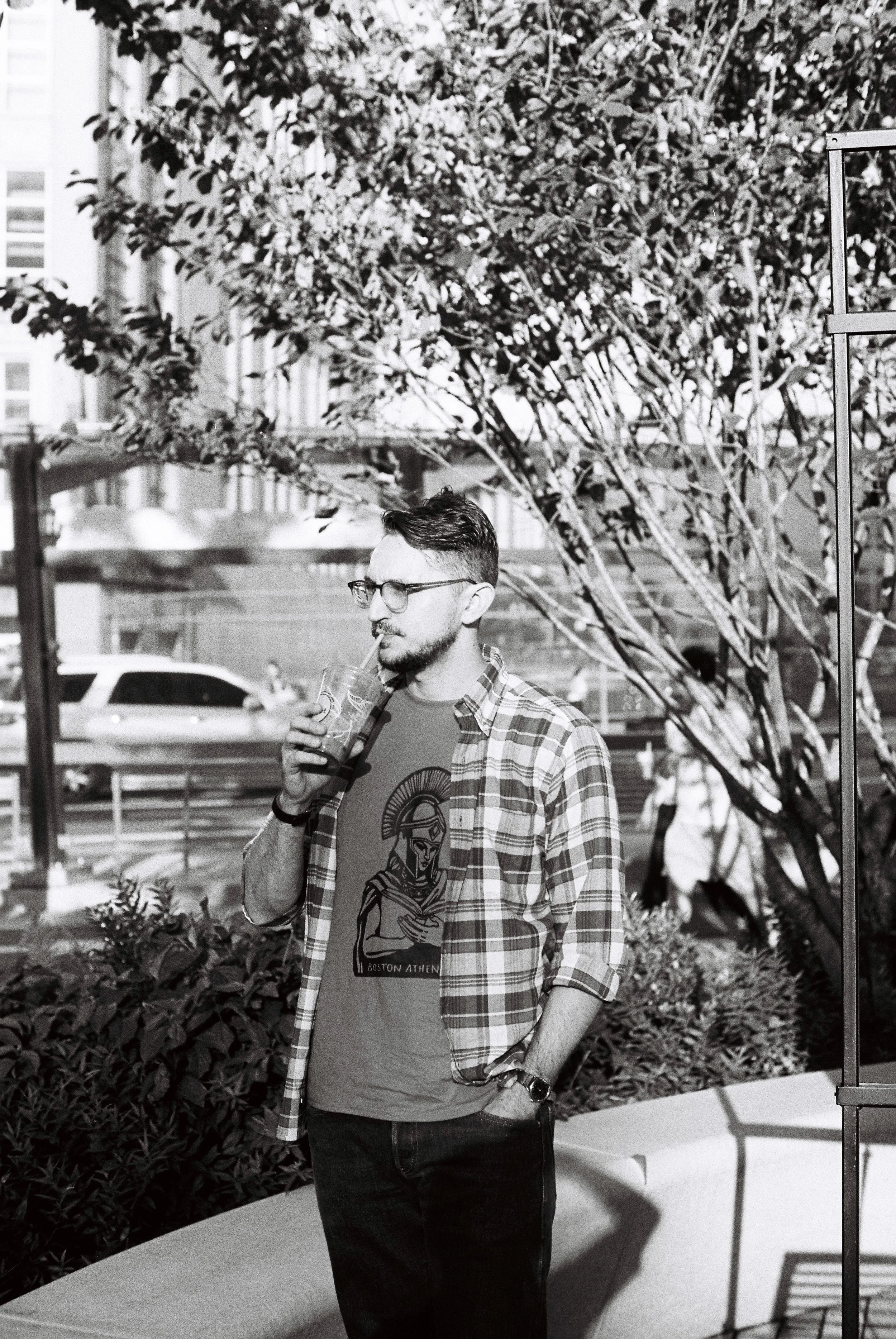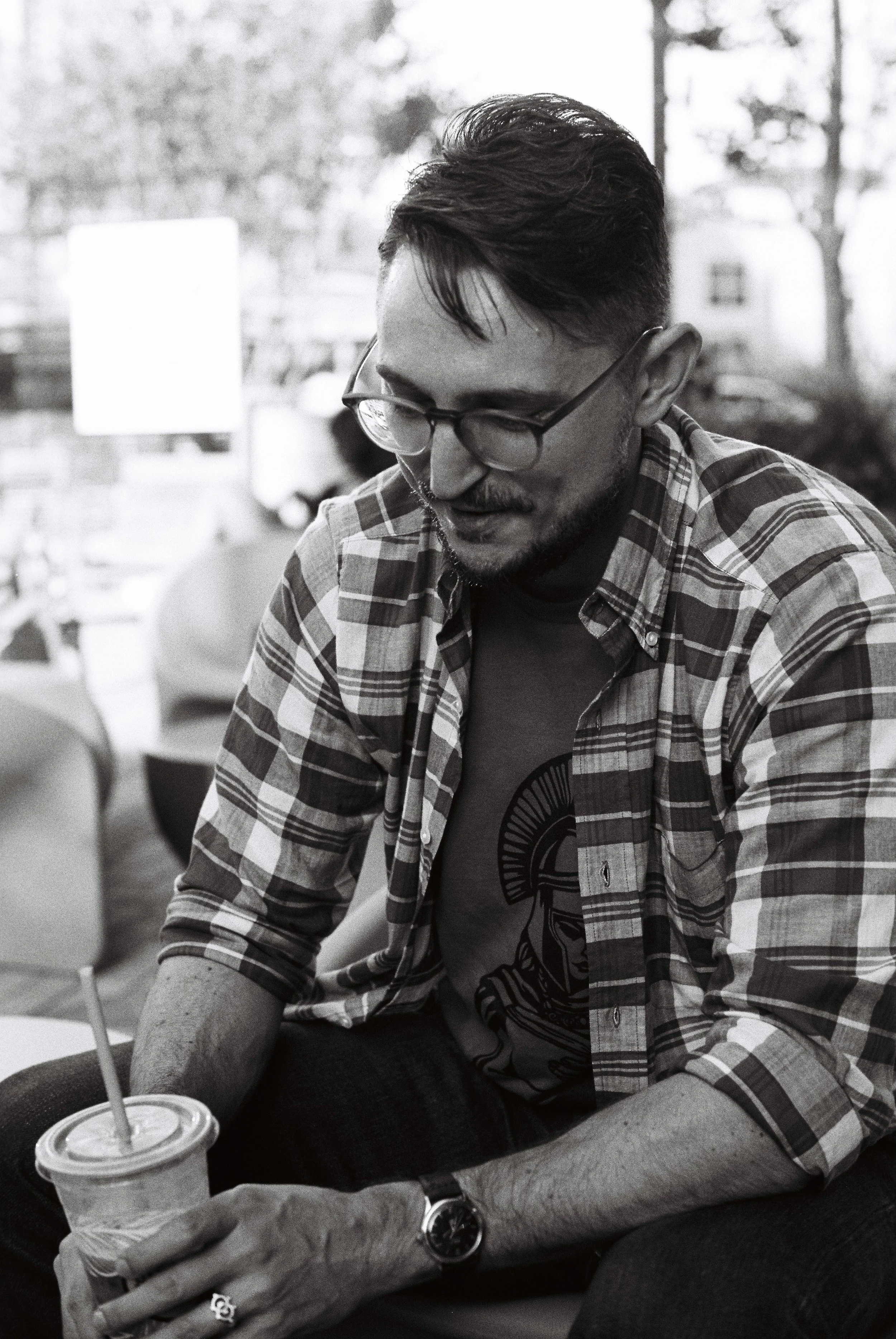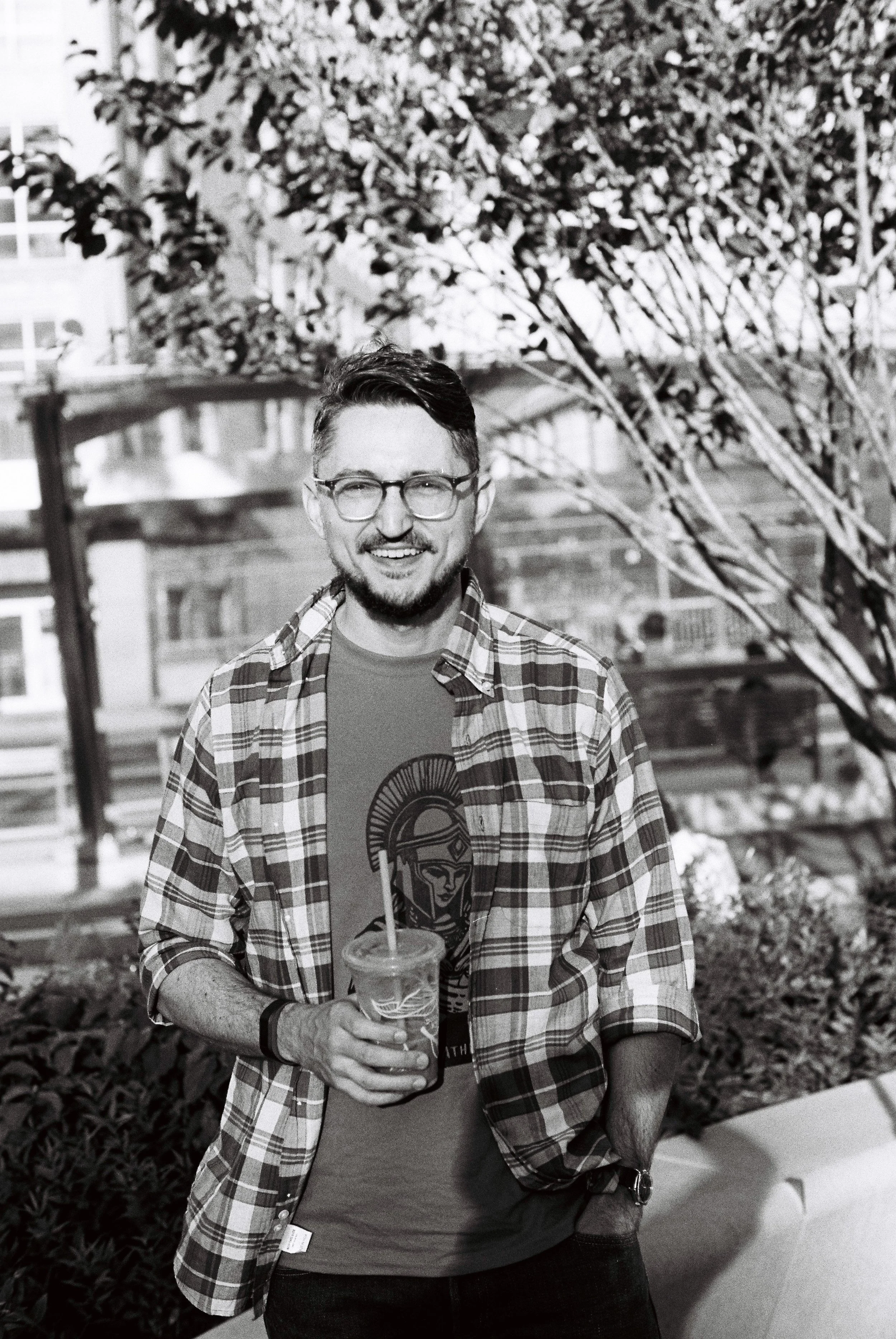Labyrinth | Hunter McDonald
The underground labyrinth of Shinjuku Station was a constant in my daily life at age 18.
I commuted to language school each morning from my broom closet in the boonies, armed with a Sony Discman and notebooks of brute-force kanji drills.
Arriving in the subterranean heart of Tokyo, I was a single tall humanoid pinball caroming amidst thousands of fellow commuters launching into the hyper-metropolis.
Though flip phones were widespread by this point (circa 2002), navigation remained a manual exercise. The learning curve was particularly steep when figuring out efficient transfers across Shinjuku’s maze of ten lines covering 15 acres of station.
One occasion stands out. A classmate flaked on meeting up, and I boarded an unfamiliar train line in an exasperated huff. It was a more peripheral route—either the Odakyu Line or the Inokashira Line. Disrupting the train car’s natural state of polite silence, a friendly soul with a neon-orange psychobilly mohawk strolled in and struck up a conversation.
In the pre-internet era, encountering someone else weird enough to be dialed into underground music produced a sense of immediate connection much rarer nowadays. Simply mentioning the band Lipcream, for example, had the currency of a freemason’s secret handshake. Trading records with pen pals as a teenager had already opened up a new world.
Masa clocked the badges on my MA-1, and I noted his spiky leather jacket covered in painted-on band logos. Our shared music nerdom triumphed over any linguistic gaps.
Impromptu train conversations are rare in Japan, yet somehow more comfortable given the lower odds your interlocutor is a total nutcase (I prefer not to chance it in New York).
Engrossed in our banter and oblivious to the direction of travel, I eventually realized I was lost in an area far from my dormitory—short on cash (ATMs also went offline during weekend hours back then) and close to last-train timing, potentially stuck until 5 a.m.
Masa’s stop was nearby, and without hesitation he offered to let me crash at the apartment he shared with his girlfriend. After grabbing beers and snacks at the conbini, he spun highlights from his record collection. A buddy of his, wearing construction clothes with a head tattoo and a pink mohawk, dropped by. The apartment décor was an eclectic mix of ’50s Americana, horror movie posters, and Japanese biker youth-cult ephemera—the kind of mini-subculture museum crammed into 40m² that one might expect to see profiled in a coffee-table book for American audiences.
The next morning we grabbed breakfast at Coco Ichi—the McDonald’s of Japanese curry rice—where Masa enlightened me on the merits of shredded cheese as an added topping to the standard order of pork curry roux over white rice. After exchanging contacts, he sent me off to the station. We texted a few times but never happened to meet again.
Months later, in a random conversation at a music venue, someone commented in hushed tones that Masa was a known tough guy to watch out for. I suppose that could also be true.
In the two decades since this chance encounter, my experiences with rail travel across New York, London, and Tokyo have yet to produce such a spontaneously cool moment.
I moved back to Tokyo after a 12-year hiatus, and the ubiquity of faces glued to smartphone screens has all but eliminated random chats—in a culture already uncomfortable with randomness.
At 18, my comfort level with the dense Shinjuku Station maze eventually reached “back of my hand” familiarity—no small feat—and I have not been intimidated by a train station anywhere since.
I nonetheless managed to get lost walking through Shinjuku Station with my wife a few months ago (mobile-phone navigation is useless below ground).
It was disappointing to see my navigation skills had atrophied. But in a way, I was almost glad I could still get lost—and leave some things up to chance.
Hunter leads investments at a renewable energy startup in Japan and Korea. He and his wife, Ariunaa, met in New York City, married in Portland, Maine (2024) and Ulaanbaatar, Mongolia (2025), and now make their home in Tokyo. At Harvard, he studied translation under Jay Rubin, Haruki Murakami’s longtime English translator, and later lived for a year in Wakeijuku, the dormitory that became the setting for Norwegian Wood. Beyond work, Hunter translates for Japanese bands releasing music and touring abroad, takes part in conversations on the geopolitics of the energy transition, and is immersed in a project tracing the culture and history of Japan’s convenience store chains.
Written by Hunter McDonald | Photography by Chessin Gertler



